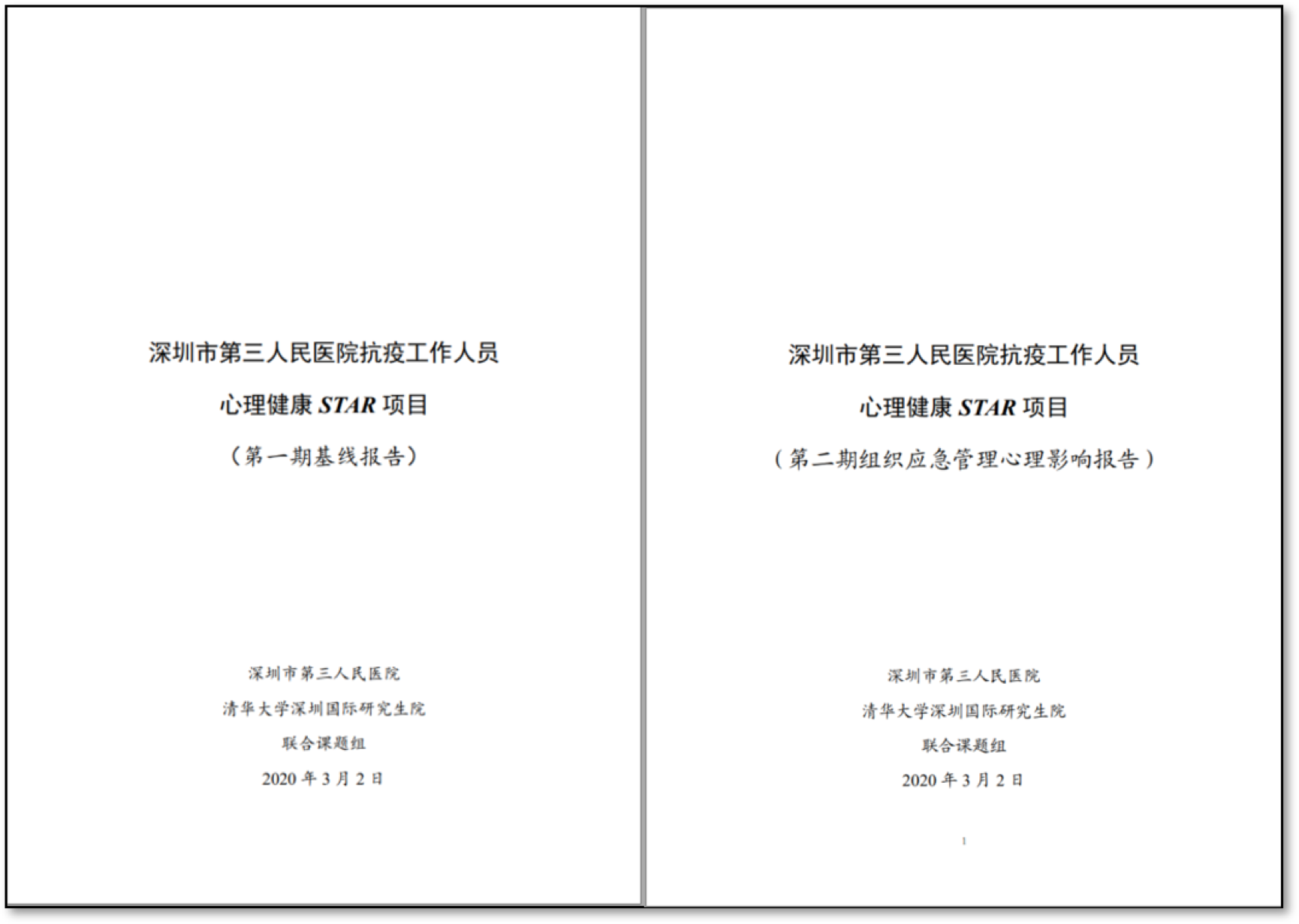Long working hours, high work intensity, and risk of infection have created great physical and mental challenges for hospital staff. Since receiving its first case in Guangdong Province on Jan 11, the Third People's Hospital of Shenzhen has become a designated hospital for receiving COVID-19 patients.
To address these mental health challenges, research groups led by Tsinghua SIGS Associate Prof. Ni Shiguang and President of the Third People’s Hospital of Shenzhen, Prof. Liu Lei have launched a Stress, Trauma and Resilience (STAR) program for its frontline workers. The program measures psychological support for hospital staff during the outbreak of the novel coronavirus.
Since February 2020, the team has been developing a psychological measurement system that investigates the mental health, psychological needs, as well as risk and protective factors of hospital staff. They have also proposed individualized plans for mental health promotion and intervention, which act as references for hospital management to make decisions that protect the health of their staff.

The team reporting to administration of the Third People's Hospital of Shenzhen
Using a three-wave study, the research team will monitor and analyze the psychological status of frontline staff. The team has processed the first set of data, and is currently conducting the second phase of the study. It was initially shown that during the epidemic prevention period, hospital staff had a higher level of overall mental health because of organizational resilience. Negative mentality was effectively buffered, which ensured high efficiency and quality in work.

Research results of the first phase
Members of the research group include alumni from the Tsinghua University Institute for Hospital Management (IHM), Li Ting and He Jinyu from the Third People's Hospital of Shenzhen, as well as Chen Jiechun, Lu Yizhi, Zhang Zihao and Wang Qiufang, students of IHM.
Using the Third People's Hospital of Shenzhen as a case study, and based on positive psychology and healthy organizational behavior, the group aims to enhance psychological well-being of medical workers and patients, and establish an organizational management and service structure to help fight the epidemic.
Photo by He Jinyu
Edited by Karen Lee


